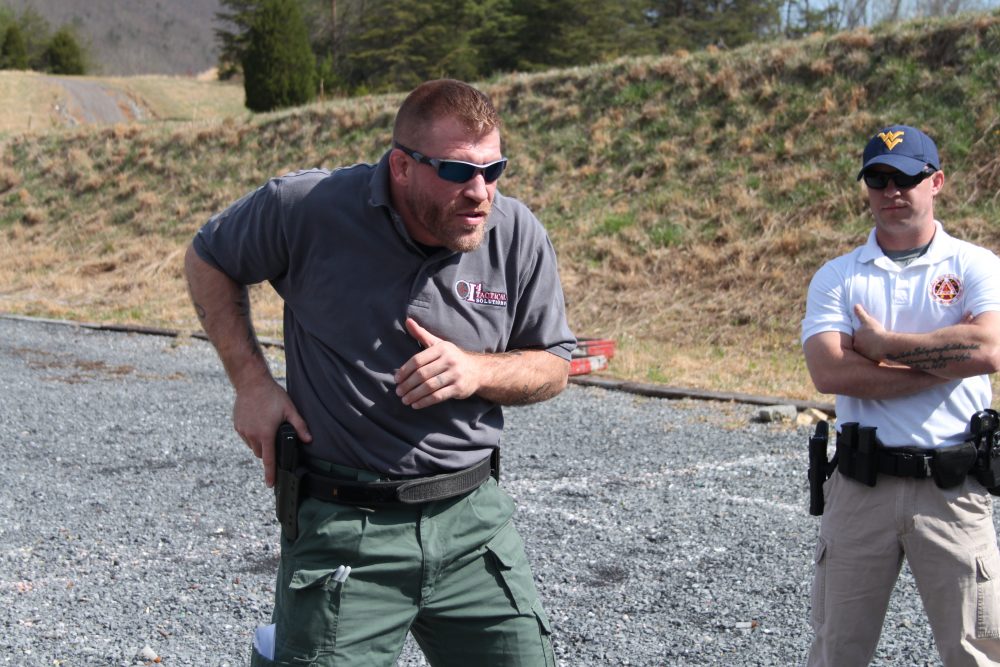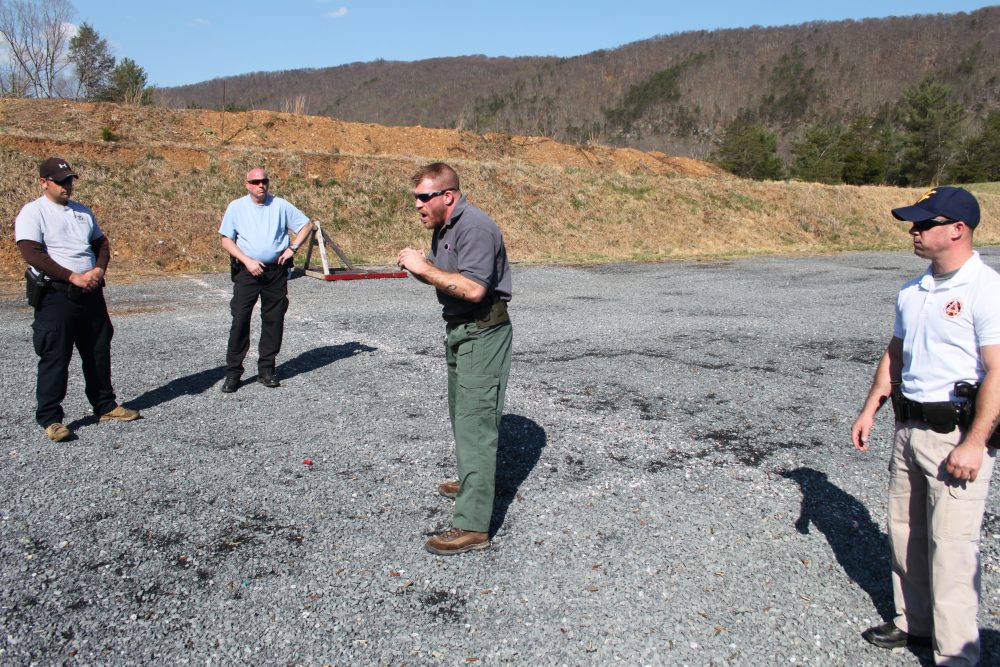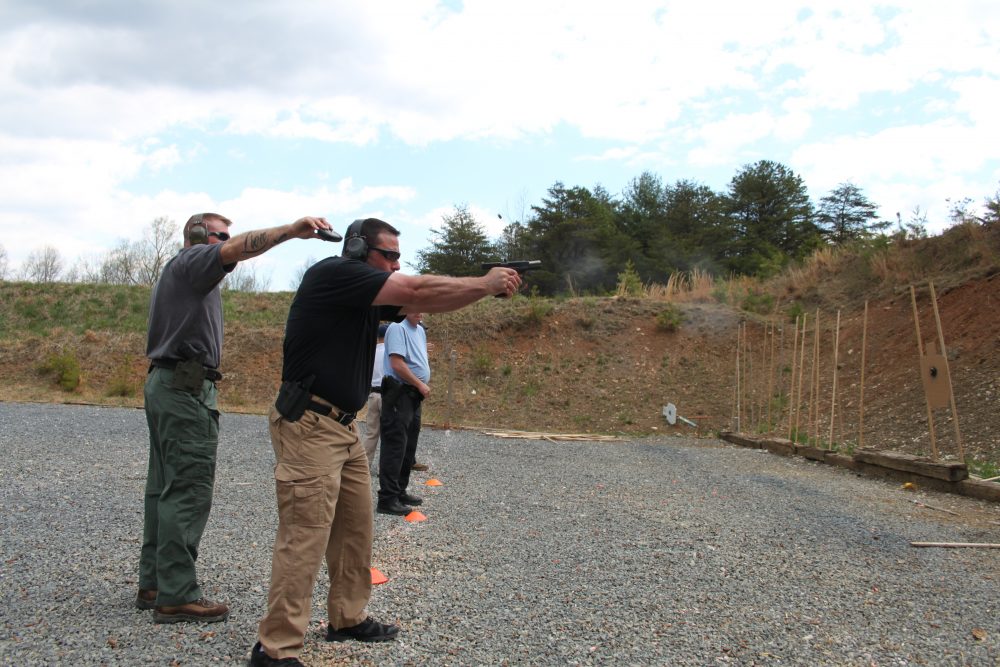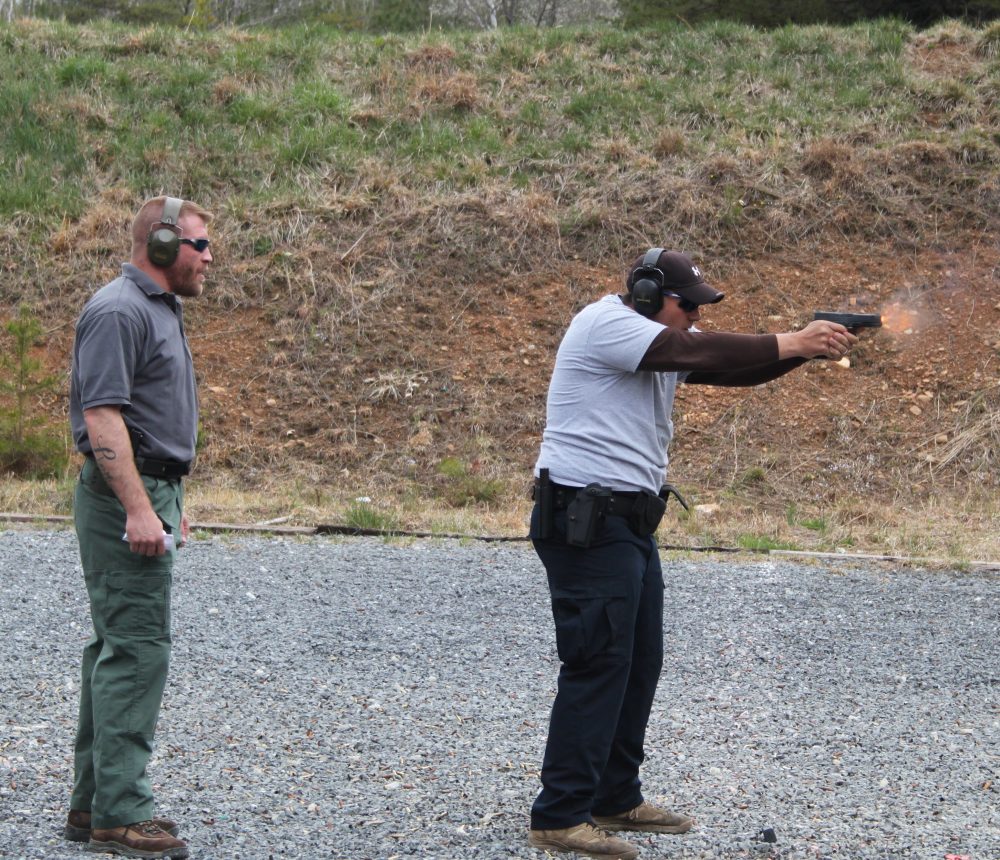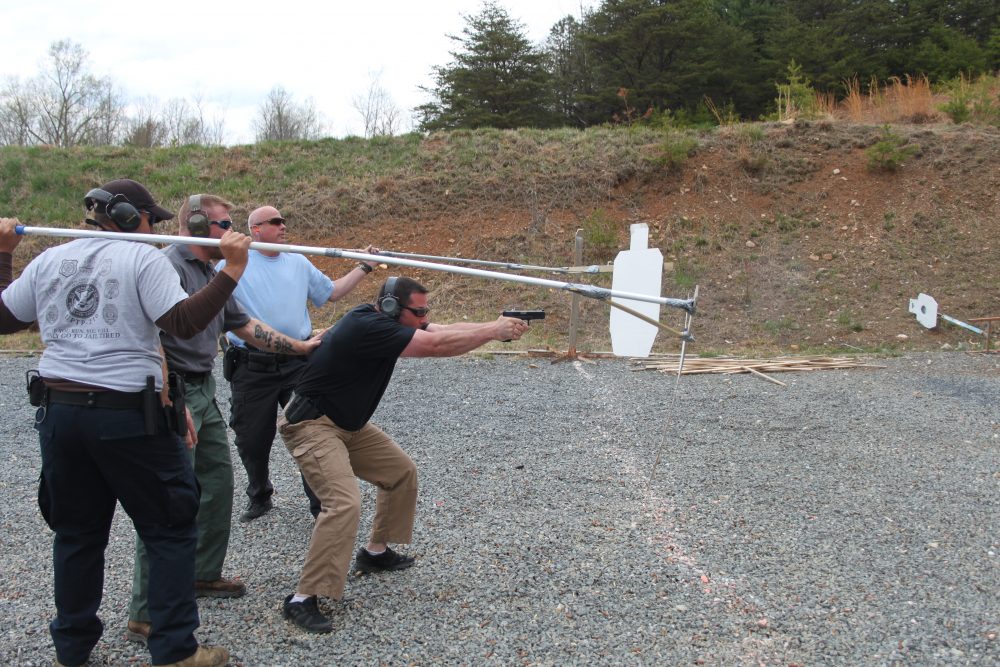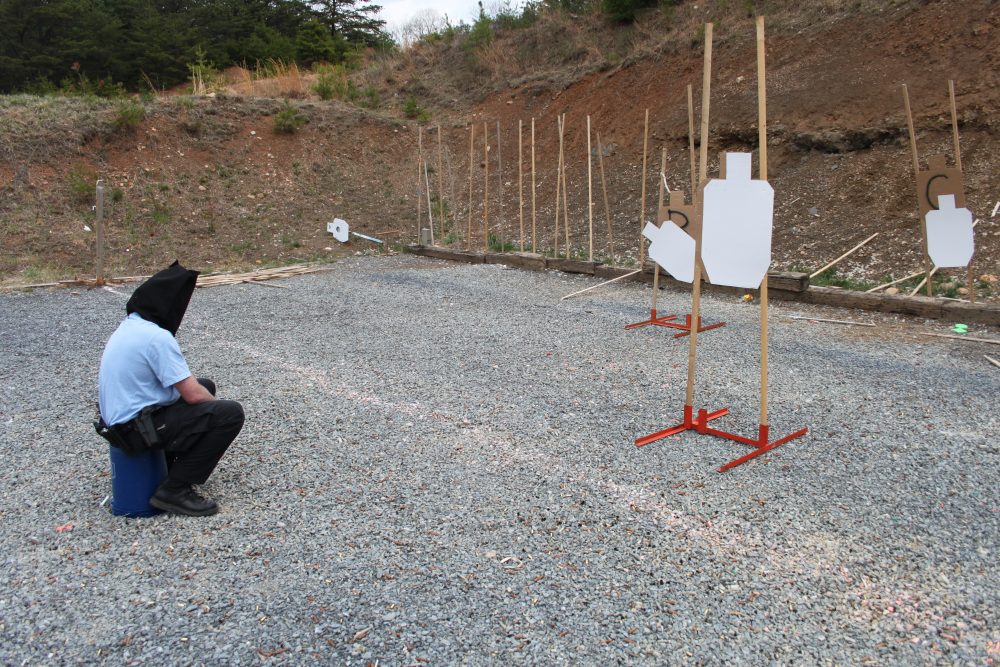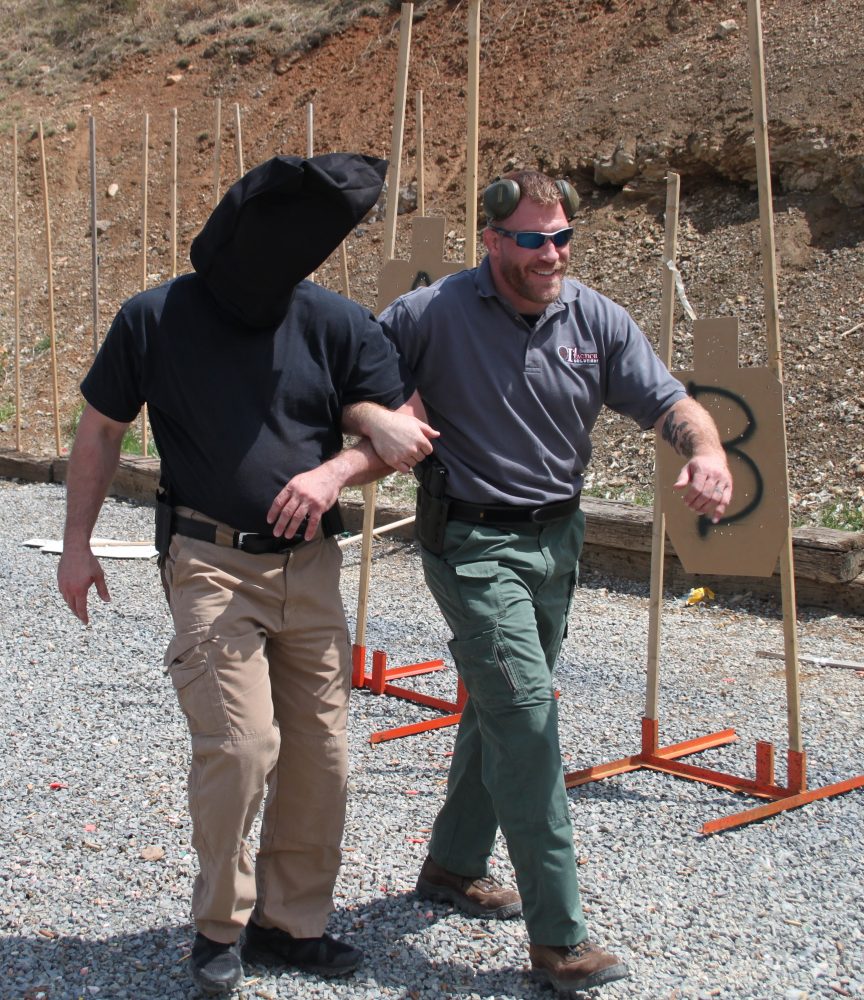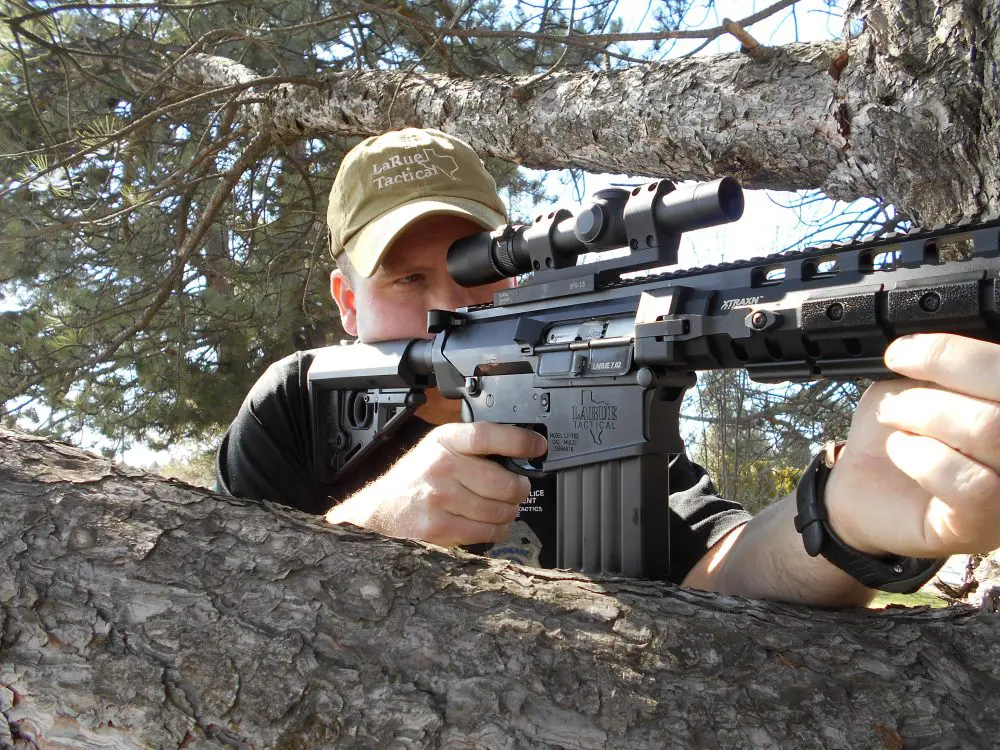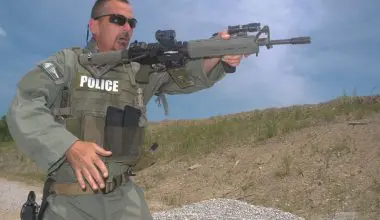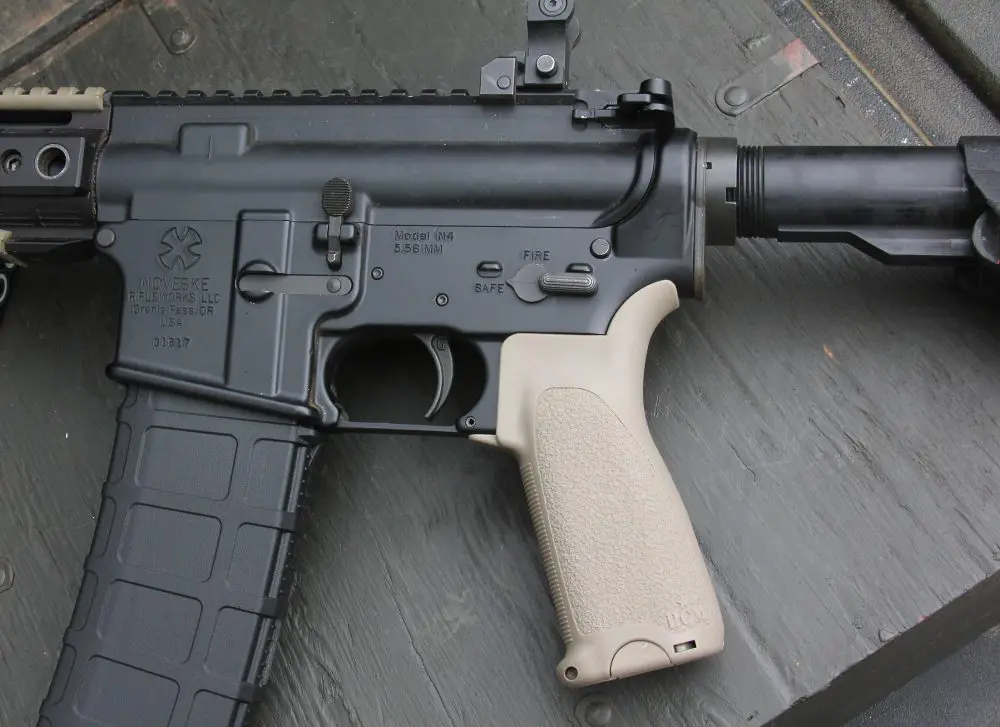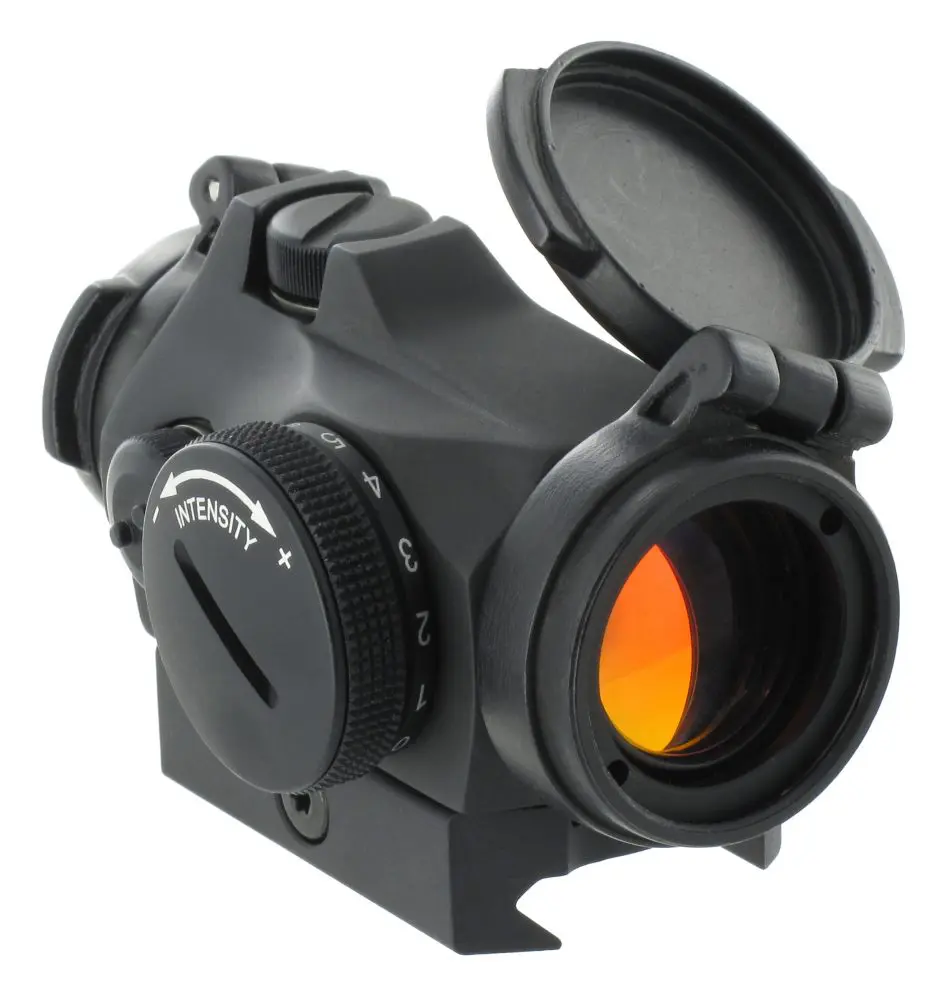Many members of the gun culture tend to rely on the latest gear and equipment, often associating this with proficiency in lieu of quality training. This can be attributed to many factors, including the gun media hyping the latest products, the psychology of not wanting to lose a perceived arms race against others, and the demands of training in terms of time and money. I will allow that gear can contribute to effectiveness, with the caveat that proper training in using it is more important.
Wehby demonstrates proper draw technique.
The more I train with firearms, the more I realize that open-hand skills make up an equal component of personal defense proficiency. In many ways, skill with your hands can be considered even more valuable than relying solely on firearms. Skill with both provides users with response options. Not every defensive encounter warrants a firearm, and a firearm may not be readily available either due to close distances or situational constraints such as being in a non-permissible environment for firearms.
I have been fortunate to attend a broad spectrum of training from highly regarded individuals specializing in knife, open hand and firearms. Most note that well-rounded training is the best approach.
But few trainers can claim the credentials that offer expertise with both open hand and firearms, because it is the rare person who can master such diverse skill sets then want to instruct and share his knowledge. When this rare commodity of an instructor is found, the experience needs to be shared.
George Wehby gives initial instruction during dry-fire portion of seminar held at Echo Valley Training Center.
Table of Contents
GEORGE WEHBY II
I recently found such an instructor in George Wehby II, who has over 17 years of experience in military, law enforcement, and security fields. This is buttressed by 27 years being actively engaged in martial arts as a student, fighter and instructor. Wehby’s career has spanned a wide gamut, from subject matter expert/host on Personal Defense TV to firearms and tactics instructor for Triple Canopy, Federal Air Marshal, police officer, and Presidential Marine Sentry.
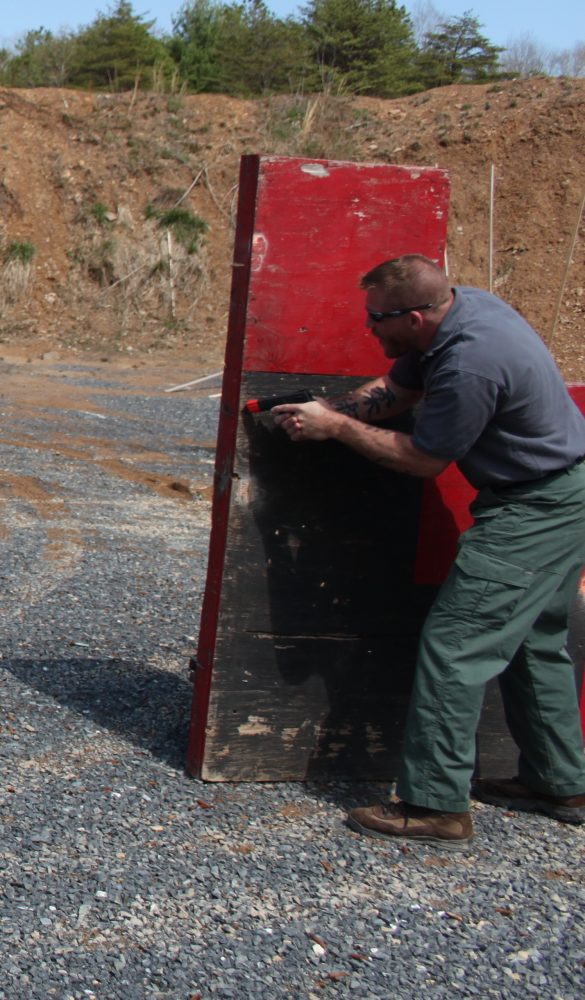
Wehby’s commitment to martial arts proficiency is evident by his multiple Black Belts in different disciplines: Black Belt, Brazilian Jiu-jitsu (Tony Passos, ATOS Brazilian Jiu-jitsu Association); Black Belt, Nisei Kito Ryu Jiu-jitsu (Sergio DeCasien, National Martial Arts Association); and Black Belt, Goju Ryu Karate (Bob Roach, South Jersey Martial Arts).
Wehby’s background means little if he cannot effectively relay his knowledge. His commitment to instructing is evident, as he owns and operates the MMA Institute of Winchester. Wehby is very active with conducting his Firearm & Personal Defense Seminars around the country. This is how I came about working with him for this article.
MARTIAL PHILOSOPHY
I attended a Wehby Seminar focused on handgun skills at Echo Valley Training Center (EVTC). I used a Glock 34 in a BlackHawk Standard holster. The G34 had Warren Tactical Sevigny Carry iron sights installed. The Sevigny Carry rear sight is wider than a standard sight, allowing for daylight around the front sight for more precise aiming and easier observation of the target.
Handgun training is the most relevant type of preparation for law enforcement officers or citizens who practice concealed carry. Ironically, proficiency with a handgun is the hardest skill set to learn and the most perishable of weapons manipulation skills. One must constantly train and practice to retain any hard-earned handgun skills.
Wehby is just as much about mindset as developing specific handgun skills. I will do my best to describe the full range of what I experienced, but you must see it for yourself to fully comprehend. With some instructors, you come away with the feeling that one class is enough—move on, as there is no more to gain. You come away from interacting with Wehby knowing there is much more to learn and develop.
Wehby’s mix of martial arts background with firearms, while subtle, is clear upon reflection. When queried about this, Wehby responded, “I am a firm believer in systems, methods and concepts. I believe everything should be tested in as close to the environment to which it will be used as possible. I think training (beyond base skill development) without stress and some form of resistance is flawed. If you cannot prove to yourself in a resistant, high-stress scenario that your skill set is usable, then any confidence is delusion or wishful thinking and most likely a copout or excuse. Like Bruce Lee said about breaking boards, boards don’t hit back. Paper and cardboard are not trying to hurt or kill you. The training paradigm of MMA (mixed martial arts) is key. How skill is developed in MMA can directly transfer to weapons and tactics.”
Training stress was slowly ratcheted up during the seminar, beginning with shooting on a timer.
There is no doubting Wehby’s lethality with his hands and firearms. His no-holds-barred honesty in describing violence and how to deal with it has led to his commitment to hardcore realistic training for those interested.
Wehby’s seminar is not about ego stroking. He is not there to make you feel great about yourself by only doing training evolutions that play to your strengths. He feels this does a disservice to anyone who is truly committed to preparing and training for the chaos of violence in a deadly encounter.
HANDGUN SKILLS SEMINAR
One must get outside their comfort zone to increase proficiency. The main topic of the seminar was integrating the handgun into the close-combat realm. The training was up-close, very personal, and unique.
No seminar will bring you to the proficiency level exhibited by someone like Wehby, who has practiced his craft his entire adult life. But a gifted instructor like Wehby can offer kernels of knowledge that can prove useful in an encounter.
A seminar will also give you something to build on for further training. Wehby’s real-world experience, combined with his understanding of CQB techniques, proves very useful in making sure those kernels of knowledge have relevant bearing. He proved adept at introducing the uncomfortable world of violence with just the right blend of shock and support.
Student engages targets upon Wehby’s command.
Wehby started the seminar with the obligatory safety brief and a quick transition into handgun basics, but Wehby conducted it with his own nuances. As most know, basics are the foundation that all must return to in order to maintain effectiveness. After all, “advanced” shooting methods are the basics done faster.
Wehby’s intensive handgun training background, especially with the Air Marshals, combined with his gift of instruction, brought home the importance of grip, trigger control and sight alignment.
Wehby moved the class through a variety of structured drills involving: 1) dry fire, stressing trigger pull and drawstroke
2) live-fire warm-up focusing on sight alignment
3) live-fire dial-in involving specified round counts and magazine changes
4) stress fire involving surprise scenarios with trainee hooded until randomly arranged targets were revealed
5) sparring scenarios with Simunition.
Two major points separate Wehby from most other instructors I’ve experienced. First is his insistence on turning a square-range setting into the most dynamic environment possible while maintaining safety. For Wehby, it is not about the number of rounds fired; rather it is about opening the students’ minds.
One method used is sitting a student down with a hood on his head while Wehby and fellow students place shoot and no-shoot targets into a specific scenario. When the hood is removed, the student is faced with an unpredictable situation on how best to act in terms of engaging or not, target order, seeking cover, etc.
Active shooter scenario simulated by random no-shoot targets floated in front of student who was trying to engage threat downrange.
FORCE-ON-FORCE SCENARIOS
The second distinguishing point for Wehby is his urge to “proof” techniques and concepts via force-on-force drills. For Wehby, force-on-force is in effect the same as sparring in the MMA realm. The unpredictable rules within force-on-force are what make it such a valuable training tool. Conducting marksmanship-based range drills alone will not prepare you for a gunfight.
Wehby is convinced and committed to testing range work to see if it will hold up under true CQB pressure, while at the same time educating students as much as possible about the true dynamics of a handgun engagement. We cannot do either of these things on a square range for obvious safety reasons.
This is where force-on-force with Simunition, Airsoft, and UTM come into play. We utilized Simunition for the Wehby EVTC seminar. Wehby set up tightly constrained drills to show students the value of movement and effective use of cover. There is nothing like getting “zipped” by a Simunition round to reinforce that moving is more important than standing still. Not getting shot is more important than achieving perfect stance and/or sight alignment.
Wehby is a proponent of force-on-force scenarios that are tightly controlled and do not spin out of control with participants doing things they would never dream of with live rounds. He proved very capable of presenting the dynamics of close-quarters pistolcraft, regardless of the skill level of the participant. Here is where Wehby’s experience and background in martial arts influence his thought process on training.
Student waits for scenario setup before being tasked with engaging.
Wehby believes that stress/chaos (or as close to it as possible in a training environment) is best experienced while training versus encountering it for the first time when your life is at stake. If Wehby were not so personable and charismatic, his professionalism when he is “working” could be intimidating.
Wehby is able to detach himself from the chaos of violence that swirls in such situations based on years of active participation in MMA. In simple terms, the stress of a real attack causes gross motor skills to override fine and complex motions. In the realm of CQB tactics, this means that simple, straightforward methods that rely on gross motor movements are your best bet.
If you cannot grasp the basic mechanics of a technique within a few tries, it’s probably not going to work well for you under stress. Simple things are also easier to remember and program as reflex.
Student being disoriented during setup phase of stress-fire drill.
TACTICAL ARTIST
Wehby views himself as a combat or tactical artist. While the majority of his training time now is in Brazilian Jiu-jitsu and MMA, he is constantly dry firing, studying and developing training drills and concepts for firearms-based training. It is his nature to study and train like conflict is imminent—truly a mindset or, better yet, a lifestyle choice. This is all combined with a passion for and enjoyment of training and teaching others—a rare commodity for someone proficient in so many disciplines.
It was eye opening to receive instruction from a different perspective compared to a firearm-centric point of view in terms of techniques, methods, and weapons. Most students, including myself, left the Wehby seminar with more questions than answers. But everyone also gained measurable improvements in skill and mindset.
Different, yet rewarding, would summarize the experience.
SOURCES
MMA INSTITUTE OF WINCHESTER
(540) 535-9640
www.mmawinchester.com
ECHO VALLEY TRAINING CENTER
(540) 450-7998
www.echovalleytrainingcenter.com
